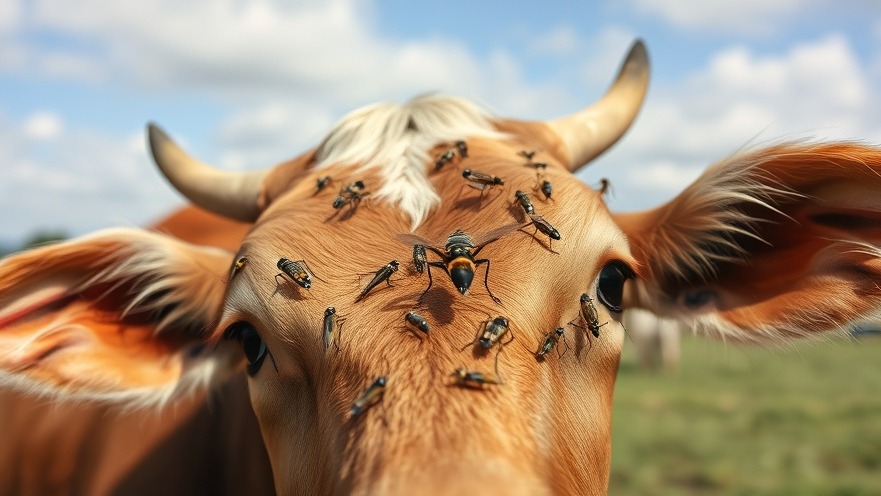
Texas Takes a Stand Against the Screwworm Threat
In an assertive move to protect its agricultural sector, Texas Governor Greg Abbott has ordered a proactive response to an invasive threat: the New World screwworm, a parasitic fly that poses a serious risk to livestock. Known for its harmful larvae that feed on the flesh of warm-blooded animals, the screwworm is not a new menace in the United States, having been eradicated by the 1960s. However, recent sightings and infestations in Mexico have reignited concerns regarding its potential re-emergence in Texas.
Collaboration and Coordination: The New Response Team
Governor Abbott's directive encourages cooperation between the Texas Animal Health Commission and the Texas Parks and Wildlife Department. Together, they will establish a New World Screwworm Response Team, aimed at sharing vital information and coordinating efforts against this invasive pest. The formation of this team underscores the urgency of preparation, with a focus on educating state residents, landowners, and livestock producers about prevention strategies. Abbott emphasized the mission to keep Texas informed, prepared, and aligned against the potential return of the screwworm.
The Economic Implications for Texas Agriculture
The potential threat of screwworm infestations cannot be understated, particularly for Texas's billion-dollar cattle industry, which supports thousands of jobs statewide. The larvae damage can result in severe animal welfare concerns and economic losses for farmers. To counter this, U.S. Department of Agriculture (USDA) has responded by suspending live animal imports from Mexico and investing $21 million into a facility that will produce sterile male flies. These sterile flies are intended to mate with females, ultimately leading to a reduction in the screwworm population. Actions like these underline the economic stake Texas holds in controlling the screwworm's spread.
Scientific Measures: A Five-Pronged Attack
To fortify these defenses, the USDA has initiated a comprehensive five-pronged plan aimed at halting the screwworm's advance. This includes developing new eradication methods, ensuring treatment availability, and enhancing surveillance efforts at key locations. Dr. David Yoskowitz from Texas Parks and Wildlife praised stakeholders and agencies for their collaborative approach thus far and emphasized the importance of staying vigilant. With local landowners and livestock producers deeply impacted by any infestation, community cooperation and awareness will be essential in safeguarding their livelihoods.
The Road Ahead: Protecting Livestock and Wildlife
The ultimate goal of the Texas New World Screwworm Response Team is not just prevention but also preparedness. With a solid foundation already laid over the past year, Texans can take comfort in the established plans and training dedicated to tackling the screwworm issue. As Dr. Bud Dinges highlighted, the proactive mindset aimed at preventing the screwworm from breaching Texas soil is crucial, not just for cattle but also for local wildlife and the ecosystem.
A Community Call to Action
Ultimately, the battle against the New World screwworm is not solely the responsibility of government agencies. Texas residents, especially those involved in agriculture, can remain informed and participate in educational efforts as the response team disseminates information. By being proactive and vigilant, Texans can play an instrumental role in protecting their state’s vital agricultural resources. Stay informed by following Texas news updates and participating in community discussions about the importance of this issue.
In a time of increasing challenges in agriculture, ensuring the integrity of livestock health is essential for Texas's economic well-being. By acknowledging the threat of invasive species like the screwworm and responding strategically, Texas sets a precedent for proactive management of future agricultural threats.
 Add Element
Add Element  Add Row
Add Row 



Write A Comment